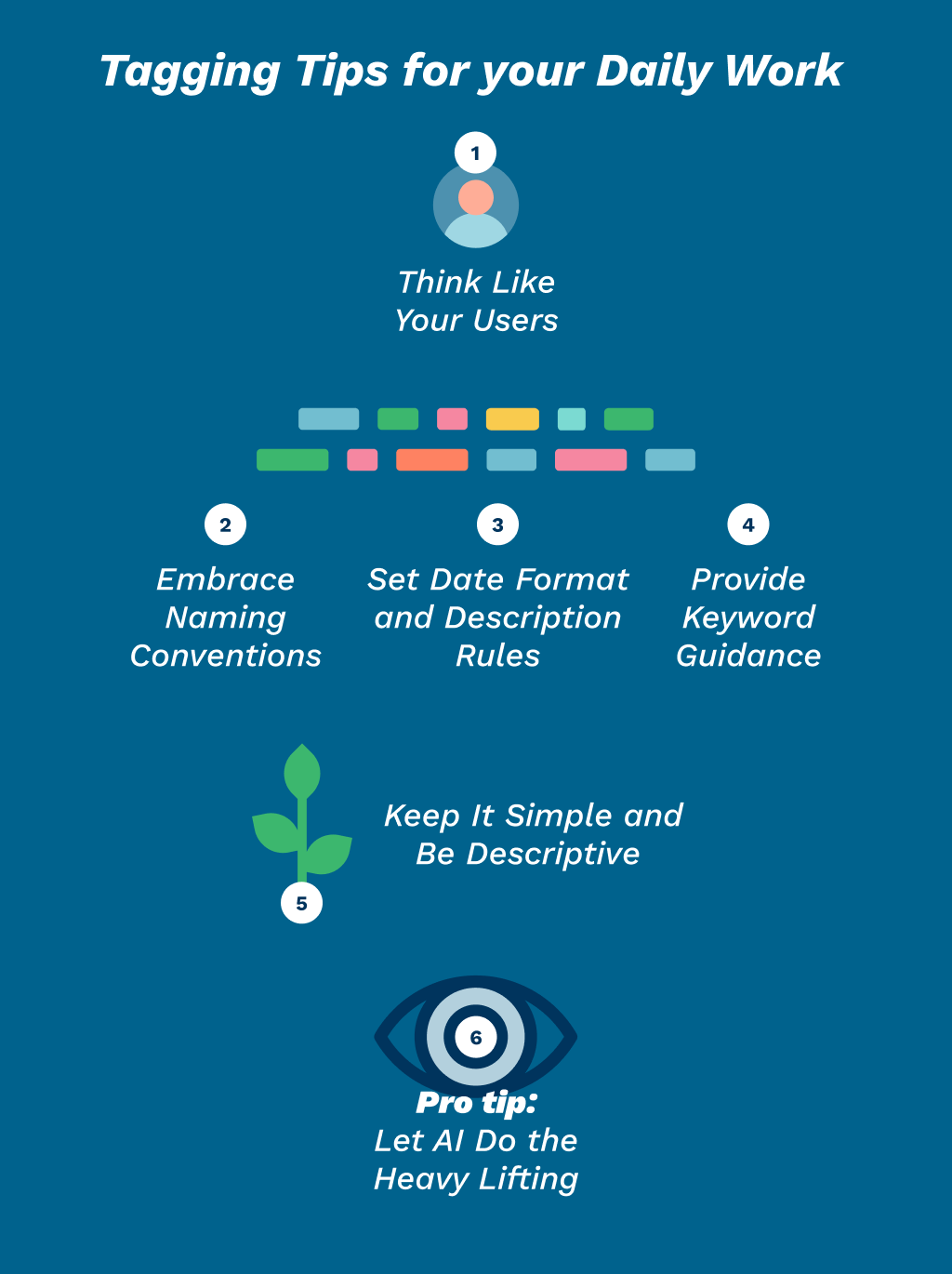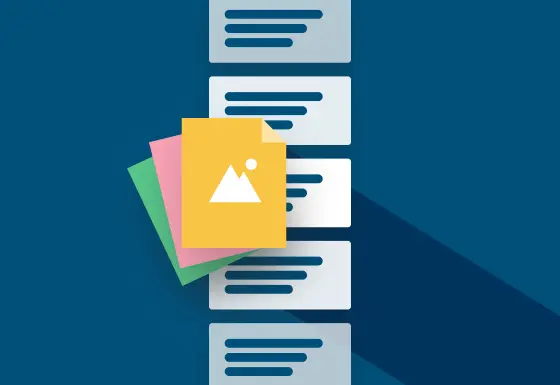We get it—managing heaps of media files can be a real pain. Luckily for you, there’s a simple solution that can make your work a whole lot easier: metadata tagging. In this guide, we’re going to show you how metadata tagging can transform your messy file chaos into a well-organized digital paradise where finding media assets is a piece of cake.
First Things First: What Is Metadata Tagging?
You already know what metadata is—if you don’t, no problem: Quickly head over to our metadata guide to refresh your memory.
Now, metadata tagging is the process of assigning descriptive labels, known as metadata tags, to your digital files. These tags describe your files without changing how they look to classify them. They are making it simpler to understand and handle your digital data efficiently.
In simple terms, metadata tagging is akin to creating custom keywords or descriptions for your files. These tags, hidden in the background, function as signposts, guiding you to the specific files you’re seeking.

Why Metadata Tagging Rocks
If you must manage a variety of digital content, metadata tags serve as reliable guides, aiding your internal work or assisting partners when sharing content. They make your files shout, “Hey, I’m over here!” and help them stand out amidst the digital clutter, making them easily accessible.
By embracing this systematic approach, metadata tagging
turbocharges your search abilities,
streamlines organization, and
simplifies the management of your digital assets.
The tagging process ensures easy access and optimal use of your information. However, it’s not just about labeling files; it’s about mastering the art of digital organization.
By doing so you can
find stuff in a flash: Ever spent ages searching for that one specific file? With Metadata tagging you are making your files a breeze to find later. No more digging through endless folders—just type in a keyword and find what you’re looking for.
improve teamwork: Tagging isn’t just for you. It helps your whole team. Imagine everyone using the same set of tags to label files. That means smooth sailing for collaborations. No more confusion about which file is which—everyone’s on the same page.
stay super organized: If you tag metadata, you can sort files based on content, not just file types. Pictures, videos, documents can all hang out together but still be easy to find. Plus, you can say goodbye to duplicates and mess. It’s like “KonMari”-ing your digital files.
Best Practices: Tagging Tips for your Daily Work
You’ve got the basics of metadata tagging down. Now let’s talk about how to work with it effectively.
Think Like Your Users
When assigning metadata tags, think of the people that are looking for a file. Consider what information they’re most likely to associate with different types of assets. For instance, photos could be associated with keywords like color, date, or subject. Understanding your users’ search preferences helps you tag files effectively.
Embrace Naming Conventions
Having rules for naming files and tags might sound boring, but it’s a game-changer. Consistency is key.
Therefore, we recommend you establish clear and consistent naming conventions for your files. Create a glossary or cheat sheet if needed.
Consistent naming means everyone knows what’s what. This consistency simplifies both the tagging process and the overall organization of your digital assets.
Set Date Format and Description Rules
Just like with file names, consistent date formats and descriptions enhance searchability. Establish rules for date formats, ensuring everyone follows the same standard.
Additionally, provide guidelines for descriptions. For instance, limit them to a certain number of words and specify the information they should contain.
Clear rules eliminate confusion and make it easier to understand the context of each asset.
Provide Keyword Guidance
Keywords can be tricky—they’re often subjective. To maintain accuracy, especially when dealing with a diverse user base or many assets, offer suggested keywords or create a defined list from which users can choose.
This guidance makes searches more precise and reliable.
Keep It Simple and Be Descriptive
Simple tags mean less confusion and more efficient searching. Think of tags like “Project X” or “Marketing Campaign”. Clear, simple, and effective.
Another important thing: When you tag, be specific. Don’t just tag a picture as “image”. Describe it: Is it a team event photo? Tag it as that. The more detailed your tags, the easier it is to find what you’re looking for later.
Pro tip: Let AI Do the Heavy Lifting
Thanks to smart AI tools, you can automate your tagging and let the tech do the work. Smart algorithms analyze your files and suggest tags, saving you time and effort. It’s like having a personal assistant for your files.
AI tools can analyze your files, figure out what they are, and suggest relevant tags. Further, AI can learn from your tagging habits and predict what tags you might need for new files. Predictive tagging saves you time and makes sure your tags are always on point.

How to Organize every Tag, Metadata and Digital Files in One Place?
Now, let’s talk about the real game-changer in metadata tagging: pixx.io, a Digital Asset Management (DAM) tool. Picture it as your trusty sidekick, quietly making your digital life easier behind the scenes.
This tool is essential for applying metadata tagging effectively. It ensures that everything has its rightful place. With pixx.io, you can easily tag your files, keeping them neatly categorized and accessible whenever you need them.
It’s also possible to manage each tag, metadata, and all your files in one tidy place in the cloud. Plus, pixx.io comes with convenient AI features, automating your sorting process effortlessly.
Start Tagging, Stop Searching
Having a DAM tool by your side is the secret to mastering metadata tagging without breaking a sweat. With a trusty DAM tool you can conquer your file chaos and boost your productivity.
Say goodbye to the endless search and hello to a well-organized digital world. Want to try it out? Test pixx.io for free and see how metadata tagging works with your files.
Sabrina
Sabrina writes for pixx.io about everything that concerns you in your day-to-day work and helps you to overcome challenges in content and social media marketing, image formats or compliance. When it comes to complex topics, she prepares the knowledge of media and legal experts for you in an understandable way.





